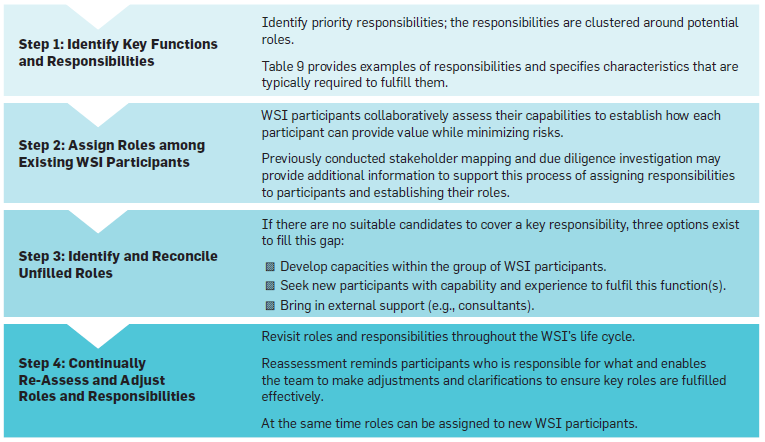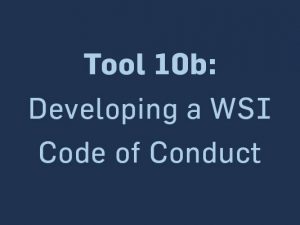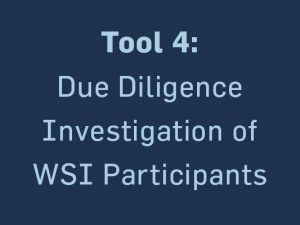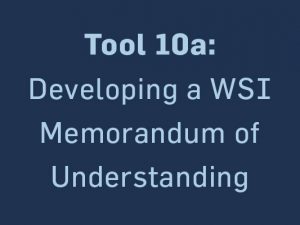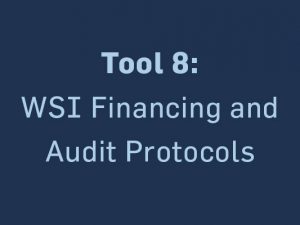| Tool | A list of roles that typically offer value to WSIs. |
| Related Key Activities | Assign appropriate roles and responsibilities. |
| Questions Addressed | What kinds of roles does the WSI need to have, and who might be best placed to fulfill those roles? |
| Purpose | Ensuring the right people are performing the correct roles in a WSI will ensure that the WSI is not set up for failure or, more importantly, that a person or organization isn’t given a role that might lead to conflicts of interests or illicit practice:
|
| Possible Users | WSI participants. |
| Level of Effort | Preparatory work to assess interest and abilities should be completed during earlier phases (via a due diligence investigation, for example), so the actual assignment of responsibilities should be a simple and straightforward task. |
| WSI Phase | 2: Formalization. |
Identifying the right people for the right roles within a WSI enhances project efficiency and enables trust-based relationships among participants. Effectively managing roles also helps to avoid failures that could lead to inappropriate practice by individual participants, thus protecting the WSI from integrity risks. For example, a company with a keen interest in securing its own water supply vis-à-vis a WSI will likely not be a credible “neutral party.” In addition to aligning participants’ roles with their capabilities, effective delegation of roles ensures that all participants play a meaningful role and that one participant does not unduly dominate the development and implementation of the WSI.
Effective WSIs typically require fulfillment of a broad array of functions to achieve success. At the same time, WSI participants bring with them a wide array of expertise and resources, as well as areas in which they have limited experience and capability. As such, well-defined roles and responsibilities among WSI participants that build on participants’ core competencies or are reflective of their main interests are critical to project success. Though some organizations may initially join a WSI without a clear understanding of their role in it, this arrangement should be temporary and the WSI should look to clearly delineate responsibilities and expectations for all participants.



